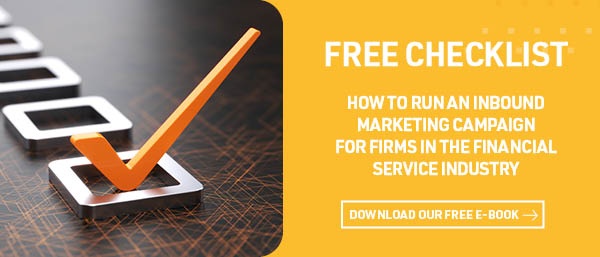

When Should Financial Advisors Send Out Marketing Emails?
When it comes to email marketing, especially email marketing for financial advisors, the more you learn about the nuances of this marketing practice, the higher your return for your efforts. As with all other forms of financial advisor digital marketing, email marketing has evolved into an important tool for advisors who want to grow their businesses.
This is because email is cost-effective, easy to use, and can statistically reach more people than any other medium. Chances are, you’re already using email as a part of your financial advisor marketing. But that doesn’t mean you can’t improve on what you’re already doing.
Timing Is Everything
Now that it’s been established that email marketing is a must-have for financial advisors, let’s address one of the biggest question marks surrounding this marketing practice: When is the best time to send out an email. This may seem trivial at first, considering it ends up in the same place no matter what time of day it goes out.
While that may be true, the adage that timing is everything most certainly applies when you are sending financial advisor emails to your drip list. Why? Because your email will likely be one of the dozens or even hundreds that the recipient gets in a single 24-hour period. And as we all know, most people don’t open the majority of emails that land in their inboxes.
Your email is competing with everything from personal communications from friends and colleagues to marketing offers and important financial and business emails. So how do you know when is the right time to reach out to your specific audience?
While there’s no universal magic time for sending emails – look at your inbox and you’ll see you receive emails at all times, day and night! – read on for some guidelines for when to send financial advisor marketing emails.
What Does the Data Say?
That too is up for debate. There are numerous studies and statistics out there that claim to know the best time to send a marketing email. According to HubSpot’s data, the highest click-to-open rates are 10 a.m., 1 p.m., and again at 6 p.m. According to Campaign Monitor’s research, 9-11 a.m. is the optimum range of times to send emails.
While the numbers are based on data from all industries, Constant Contact takes it a step further for financial advisors. According to their research, the best general time to send financial advisor emails is Mondays around 6 p.m. These emails experienced the best open rates, and that’s under the presumption that subscribers are more accessible after getting a weekend “refresh” and have not felt the full pressures of the week’s pending activities.
While the above data shows some interesting overlaps as well as differences in opinion on optimal send times, they all have valid data to back up their recommendations. But what does that mean for your financial advisor marketing emails? If you’re feeling more confused than ever, don’t worry we are about to take a deeper dive into the topic.
Know Your Audience
While the aforementioned information details some optimal marketing email sending windows, no one’s email audience is exactly the same. By getting to know your audience through analytics and picking up on trends, you can find out more about the email habits of your audience. This is also a good time to consider segmenting your audience. For example, older investors may have much different viewing habits than younger investors. Not to mention the differences in their financial interests.
By segmenting, you can further analyze behaviors and group similar contacts together and optimize content and send times for the best results. Most email platforms offer the ability to segment audiences as a feature, but if your current provider doesn’t, consider upgrading to one that does. Digital marketing in general, especially email marketing, does not work when you use a “one size fits all” approach.
Consider the Content
Depending on what types of emails you send, there may be better times to send one type versus another. For example, if you have an onboarding campaign set up to send new subscribers welcome emails, the optimal time for that email is whatever time they signed up!
If they just submitted the signup form, you know they are online at that moment and more likely to open your welcome email. If you also have regular daily, weekly, or monthly content that goes out to the entire audience, that may be where you look to the data for optimal email sending days and times to increase your open rates and overall campaign success.
Test, Test, Test!
If we’ve learned anything about digital marketing for financial advisors, it’s that trusting someone else’s data and results with their unique audiences is not the same as doing your own research and testing with your various audiences. As mentioned above, most email platforms have functions that allow for more than just collecting addresses and sending emails.
Your platform should have the ability to analyze the data for every email you send. At the base level, this should include open rates, click rates, click-to-open rates, and unsubscribes. By checking the results of every email campaign, you can look for trends that can help you determine the best send times, and much more.
And don’t overlook those unsubscribe numbers. If you notice more unsubscribes at certain times of the day (or 1–2-hour windows) you may be able to pick up on a pattern and realize that is not an optimal time for sending your financial advisor emails.
Be Consistent
While you may take some time initially to test and try different days and times to find the optimal send time, once you get an answer it’s best to stick with it. As an example, if you’re sending regular emails as part of an overall email campaign strategy, it pays to be consistent.
By sending your weekly market commentary emails every Wednesday at 9 a.m., you’re letting your audience know what they can expect in that email and that they know what will be included as part of that email campaign series. This can not only increase your open rates but also minimize your unsubscribes from recipients who don’t know what the email contains and assume it’s junk.
We hope you find this information helpful as you plan your future financial advisor email marketing campaigns, and we’d love to help! Reach out if you’d like more information.

Debbie Freeman
Search Here
Categories
- AI (18)
- blogging (2)
- branding (1)
- content (12)
- custodians (1)
- Digital (537)
- email marketing (3)
- fcmo (3)
- fees (1)
- financial advisor marketing (68)
- Google (3)
- Ideas & Tips (125)
- Investor Experience (7)
- lead generation (7)
- linkedin (1)
- Marketing (607)
- newsletters (1)
- Online Transparency (2)
- podcasting (1)
- search engine optimization (4)
- seo (9)
- Social Media (2)
- video (3)
- Websites (172)
- YouTube channel (2)
Recent Posts
-
 November 20, 2025
November 20, 2025 -

Trust Is The Biggest Online Marketing Challenge For Financial Advisors
November 17, 2025 -

Compliant Financial Advisor Bios Using AI Website Builders
October 22, 2025 -

-

Top 10 Business Challenges for Smaller Financial Advisor Firms
October 16, 2025

